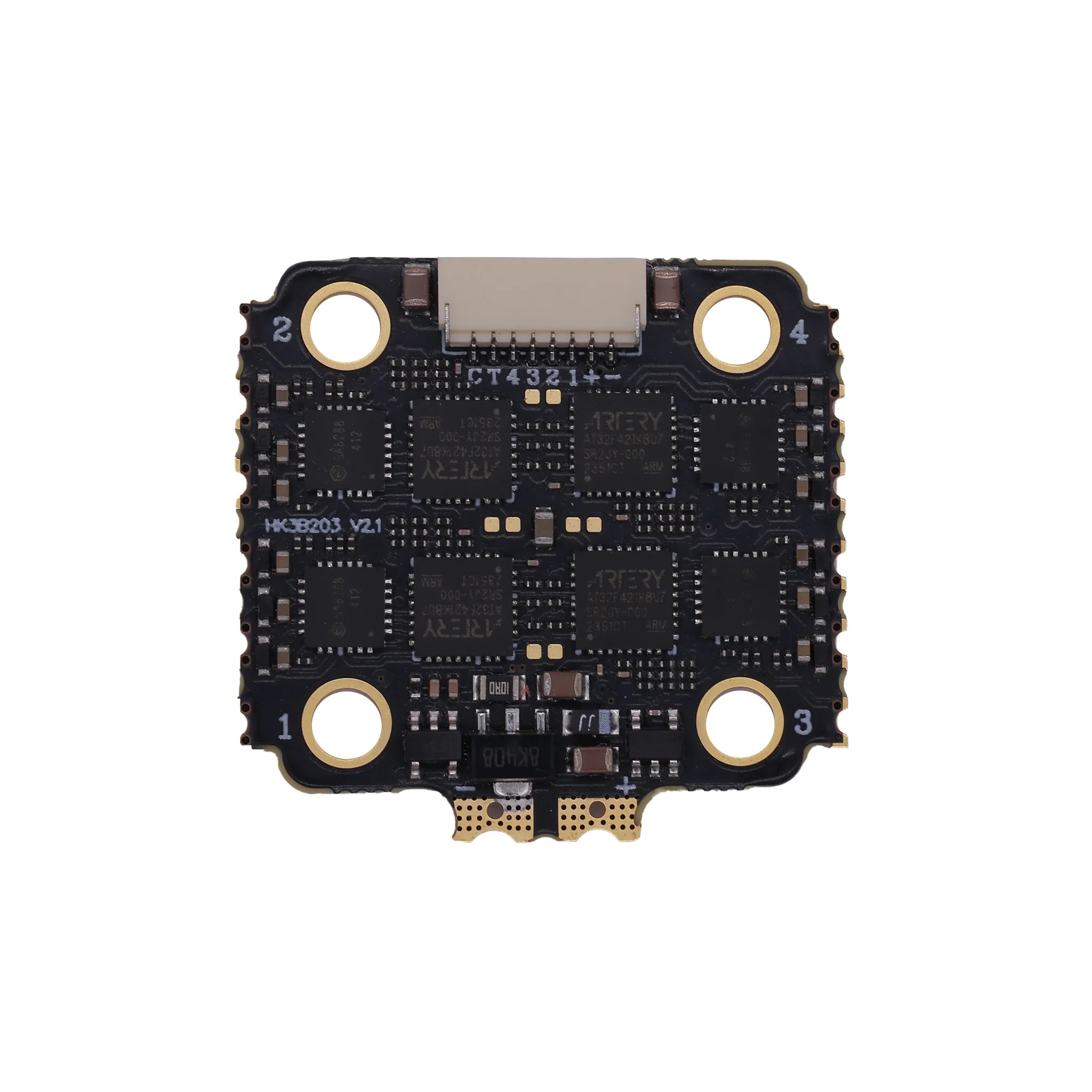When selecting a flight controller for an FPV (First-Person View) quadcopter, the processor determines computing power and memory affects data processing efficiency. You need to match the controller to your flight needs (e.g., beginner/racing/aerial photography) in a targeted manner. The core logic is as follows:
Core Consideration: Processor (CPU) Parameters
The processor is the "brain" of the flight controller, directly determining the speed of attitude calculation, sensor data processing, and firmware response. The key factors to focus on are architecture, clock speed, and core count.
Architecture: The mainstream option is the ARM Cortex-M series, with performance ranking from low to high: Cortex-M4 < Cortex-M7 < Cortex-M9
Beginner/Standard Level: Choose Cortex-M4 (e.g., STM32F4 series) to meet basic flight needs (stable attitude, basic stunts) with high cost-effectiveness.
Advanced/Racing/HD Aerial Photography Level: Choose Cortex-M7 (e.g., STM32H7 series), which supports higher refresh rate sensors (e.g., 600Hz gyroscope) and multi-tasking (video transmission data + GPS + OSD overlay), making it suitable for complex scenarios.

Hakrc F4530 V2 Flight Controller
Clock Speed: A higher clock speed means faster single-task computing. The common range is 150MHz - 400MHz
Beginner: 150-200MHz (e.g., STM32F405, 216MHz);
Advanced: 300-400MHz (e.g., STM32H743, 400MHz), to avoid lag under high load (e.g., sharp turns in racing, multi-sensor operation).
Core Count: A single core can meet basic needs. Dual-core/three-core processors (e.g., STM32H7 series) support "parallel processing" — for example, one core handles attitude calculation, while another processes video transmission/remote control data. This is ideal for high-complexity FPV scenarios (e.g., racing drones, HD aerial photography).
Key Supplementary Factor: Memory (RAM/Flash)
Memory is divided into "running memory (RAM)" and "storage memory (Flash)", which affect "real-time data processing" and "firmware/parameter storage" respectively.
|
Memory Type |
Function |
Selection Recommendations (by Need Level) |
|
RAM |
Temporarily stores attitude, sensor, and remote control data; smaller RAM is more prone to lag |
Beginner: 128KB-256KB; Advanced: 512KB-1MB (supports multi-sensor/HD video transmission) |
|
Flash |
Stores flight controller firmware (e.g., Betaflight) and flight parameters; insufficient Flash prevents upgrading to higher-version firmware |
Beginner: 1MB-2MB; Advanced: 4MB-8MB (supports firmware extension functions such as GPS navigation and blackbox logging) |
Scenario-Based Selection Summary
Beginner Practice Drone:
Processor: Cortex-M4 (clock speed 200-250MHz, single-core);
Memory: RAM ≥ 128KB, Flash ≥ 1MB;
Example: STM32F405 flight controller (e.g., F411 basic model), which meets the needs of stable hovering and simple stunts with high cost-effectiveness.
Racing Drone (Advanced):
Processor: Cortex-M7 (clock speed 350-400MHz, dual-core);
Memory: RAM ≥ 512KB, Flash ≥ 4MB;
Example: STM32H743 flight controller (e.g., H723/H743 models), which supports high-refresh-rate gyroscopes (600Hz) and fast response to controls, avoiding delays during racing.
HD Aerial Photography/Multi-Function Drone (Professional):
Processor: Cortex-M7/M9 (clock speed ≥ 400MHz, dual/three-core)
Memory: RAM ≥ 1MB, Flash ≥ 8MB
Example: STM32H750 flight controller, which supports simultaneous processing of 4K video transmission, GPS, blackbox logging, and gimbal control, meeting multi-tasking needs.

Hakrc F7230V2 Flight Controller
Additional Notes
Compatibility: The processor/memory must be compatible with the flight controller firmware (e.g., Betaflight, INAV). Some older firmware versions do not support high-spec Cortex-M7, so confirm firmware compatibility in advance.
Heat Dissipation: High-clock-speed processors (e.g., 400MHz M7) generate more heat. Choose a flight controller with a heat sink to prevent performance degradation due to high temperatures.
User Feedback: Prioritize mainstream models on the market (e.g., F4, H7 series), as they have better community support and make troubleshooting easier (e.g., abundant tutorials on the Betaflight forum).





